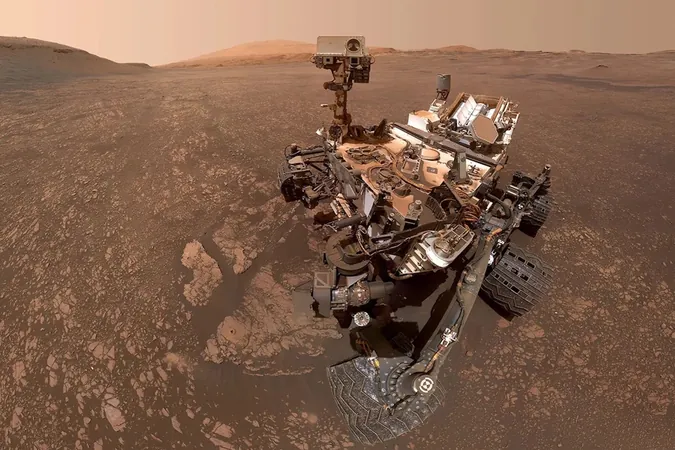
NASA's Curiosity Rover Unveils Secrets of Ancient Mars Atmosphere
2025-04-22
Author: John Tan
For over 13 years, NASA's Curiosity rover has been on a mission across Mars, covering roughly 21 miles (34 kilometers) in its quest to unlock the secrets of possible ancient life on the Red Planet. Now, this robotic explorer has made a groundbreaking discovery that may finally answer the nagging question: What happened to Mars' atmosphere billions of years ago, transforming it from a once-wet, life-supporting landscape into today’s barren desert?
Curiosity recently unearthed significant deposits of carbon within the sulfate-rich layers of Mount Sharp, located in the Gale Crater, one of Mars' largest impact basins. A paper published in the journal Science details astonishing findings: the rover has identified abundant siderite, an iron carbonate mineral critical to understanding Mars' wet and potentially habitable past.
The formation of carbonate minerals such as siderite requires both water and carbon dioxide. This aligns perfectly with theories suggesting that ancient Mars boasted a thick, carbon dioxide-laden atmosphere and flowing water. Until now, previous missions had failed to present enough carbonate evidence to confirm these theories—until Curiosity stepped in with its latest findings.
"The discovery of abundant siderite in Gale Crater marks a significant milestone in our understanding of Mars' geological and atmospheric evolution," stated Benjamin Tutolo, the lead author of the study and an associate professor at the University of Calgary. His excitement is indicative of how pivotal this discovery is.
While scientists have long believed that Mars had a carbon dioxide-rich atmosphere, Curiosity's findings provide the critical mineral evidence to support this groundbreaking theory. "This tells us that Mars was indeed habitable, and our models for habitability are validated," Tutolo added, emphasizing the importance of this revelation.
As Mars' atmosphere thinned over eons, carbon dioxide underwent a transformation into rock. This cooling process not only altered the planet’s climate but also hampered its ability to sustain surface water, according to the researchers' analysis.
Curiosity utilizes a drill deployed from its arm to extract powdered samples from Martian rock, delving about three to four centimeters into the surface. These precious samples are then analyzed using the rover’s CheMin instrument, which employs X-ray diffraction to scrutinize the mineral compositions. Thomas Bristow, a research scientist at NASA’s Ames Research Center and co-author of the study, elaborated, "Drilling through the layered Martian surface is like flipping through a history book. Just a few centimeters down reveals the minerals that formed close to the surface around 3.5 billion years ago."
The recent discovery of carbonate minerals buried beneath Mars' surface raises intriguing possibilities. It suggests that previous missions may not have detected these minerals due to interference from other elements visible in satellite imagery. If carbonate minerals are indeed widespread across Mars' sulfate-rich regions, they could indicate conditions that once favored a warm world teeming with liquid water.
As Curiosity continues its exploration of the Martian landscape, each finding peels back the layers of history, painting a clearer picture of Mars’ dynamic past and its capacity to harbor life.



 Brasil (PT)
Brasil (PT)
 Canada (EN)
Canada (EN)
 Chile (ES)
Chile (ES)
 Česko (CS)
Česko (CS)
 대한민국 (KO)
대한민국 (KO)
 España (ES)
España (ES)
 France (FR)
France (FR)
 Hong Kong (EN)
Hong Kong (EN)
 Italia (IT)
Italia (IT)
 日本 (JA)
日本 (JA)
 Magyarország (HU)
Magyarország (HU)
 Norge (NO)
Norge (NO)
 Polska (PL)
Polska (PL)
 Schweiz (DE)
Schweiz (DE)
 Singapore (EN)
Singapore (EN)
 Sverige (SV)
Sverige (SV)
 Suomi (FI)
Suomi (FI)
 Türkiye (TR)
Türkiye (TR)
 الإمارات العربية المتحدة (AR)
الإمارات العربية المتحدة (AR)